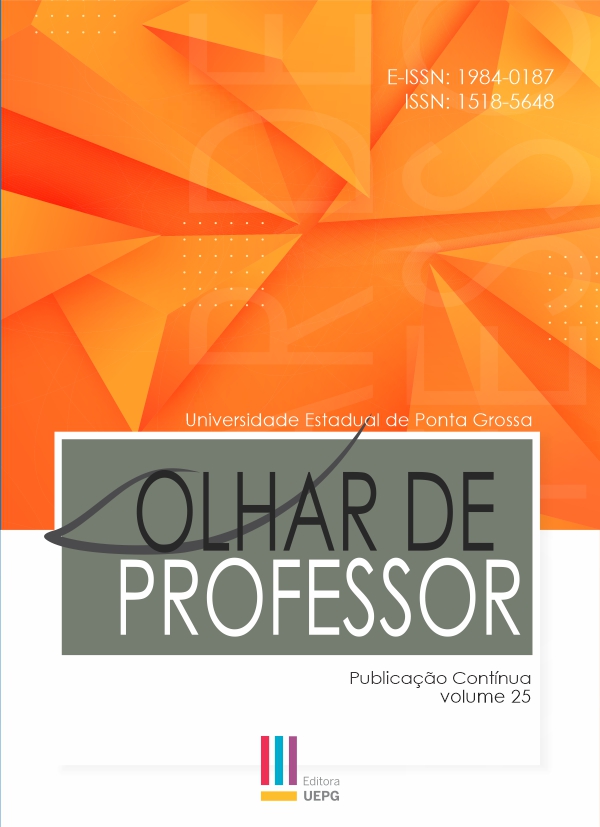O desenho infantil potencializado pelos estudos da cultura visual e pela educação estética
Main Article Content
Abstract
This article consists of a qualitative research based on pedagogical intervention during visual arts classes and presents reflections on drawing as an expressive language potentiated by actions mediated by the teacher, enriched by visual amplification from aesthetic education. The teaching practice started from a concern about the use of stereotypes and animism in children’s drawings from the 1st to the 5th grade of the elementary school classes. The analysis was carried out based on the concept of “drawings received” by Vianna (2012) with the pedagogical intervention based on the concept of “cultivated drawing” by Iavelberg (2013, 2017), on the “Visual Culture Studies” proposed by Hernández (2000, 2007) and through the “aesthetic education” based on Vigotski (2003). The experience demonstrated the presence of images received and the possibilities for their transformation and evidenced the need to deepen the inquiries raised that are under development in Master research.
Downloads
Article Details
Authors who publish in this journal agree with the following terms:
a) Authors keep the copyrights and concede the right of its first publication to the magazine. The work piece must be simultaneously licensed on the Creative Commons Attribution License which allows the paper sharing, and preserves both the author identity and the right of first publication to this magazine.
b) Authors are authorized to assume additional contracts separately, to not-exclusively distribution of the paper version published in this magazine (e.g.: publish in institutional repository or as a book chapter), with the author identity recognition and its first publication in this magazine.
c) Authors are permitted and stimulated to publish and distribute their papers online (e.g.: in institutional repository or on their personal webpage), considering it can generate productive alterations, as well as increase the impact and the quotations of the published paper.
d) This journal provides public access to all its content, as this allows a greater visibility and reach of published articles and reviews. For more information on this approach, visit the Public Knowledge Project, a project that developed this system to improve the academic and public quality of the research, distributing OJS as well as other software to support the publication system of public access to academic sources.
e) The names and e-mail addresses on this site will be used exclusively for the purposes of the journal and are not available for other purposes.

This work is licensed under a Creative Commons Attribution 4.0 International License.
References
CURITIBA. Secretaria Municipal de Educação. Currículo do ensino fundamental. Curitiba, 2016a.
CURITIBA. Secretaria Municipal de Educação. Currículo do ensino fundamental: diálogos com a BNCC da secretaria municipal de educação de Curitiba, 1º ao 9º ano. v. IV: linguagens, 2020a. Disponível em:
CURITIBA. Secretaria Municipal de Educação. Plano curricular de arte. Curitiba, 2020b. Disponível em:
CURITIBA. Secretaria Municipal de Educação. Plano curricular de arte do 1º ao 5º ano. Curitiba, 2016b.
DAMIANI, M. F.; ROCHEFORT, R. S.; CASTRO, R. F.; DARIZ, M. R.; PINHEIRO, S. S. Discutindo pesquisas do tipo intervenção pedagógica. Cadernos de Educação, Faculdade de Educação UFPel, RS, 2013. Disponível em:
DERDYK, E. Formas de pensar o desenho: desenvolvimento do grafismo Infantil. 5. ed. Porto Alegre: Zouk, 2015.
FERRAZ, M. H. C. de T.; FUSARI, M. F. de R. Arte e educação escolar. São Paulo: Cortez, 2010.
FLAUBERT, G. Dicionário das ideias feitas. São Paulo: Nova Alexandria, 1995.
HERNÁNDEZ, F. Catadores da cultura visual: proposta para uma nova narrativa educacional. Porto Alegre: Mediação, 2007.
HERNÁNDEZ, F. Cultura visual, mudança educativa e projeto de trabalho. Tradução de: RODRIGUES, Jussara Haubert. Porto Alegre: Artmed, 2000.
IAVELBERG, R. Desenho na educação infantil. São Paulo: Melhoramentos, 2013.
IAVELBERG, R. O que muda na história: o desenho da criança ou a cultura didática. In: ESPINOSA, A. M. 30 olhares para o futuro. São Paulo: Centro de Formação da Escola da Vila, 2010.
IAVELBERG, R.; GRINSPUM, D. Museu, escola: espaços de aprendizagem em artes visuais. In: CONGRESSO DA FEDERAÇÃO DE ARTE/EDUCADORES DO BRASIL, 24., 2014. Anais. Ponta Grossa: ConFaeb, 2014.
LOWENFELD, V.; BRITTAIN, L. W. Desenvolvimento da capacidade criadora. Tradução de: CABRAL, Álvaro. São Paulo: Mestre Jou, 1977.
LÜDKE, M.; ANDRÉ, M. E. D. A. Pesquisa em educação: abordagens qualitativas. São Paulo: EPU, 1986.
LUQUET, G. O desenho infantil. Tradução de: AZEVEDO, Maria Teresa Gonçalves de. Porto: Minho, 1969.
MARTINS, R. Imagem, identidade e escola. In: Revista Salto para o Futuro, Cultura Visual e Escola, Rio de Janeiro, ano 21, boletim 9, p. 15-21, ago. 2011.
MIMERÓGRAFO. In: Michaelis. São Paulo: Melhoramentos. Disponível em:
VIANNA, M. L. R. Desenhando com todos os lados do cérebro: possibilidades de transformação das imagens escolares. Curitiba: InterSaberes, 2012.
VIGOTSKI, L. S. (1930) Imaginação e criação na infância. Comentários de Ana Luiza Smolka. Tradução de: PRESTES, Zoia Ribeiro. São Paulo: Ática, 2009.
VIGOTSKI, L. S. (1921-1924) Psicologia pedagógica. Tradução de: SCHILLING, Claudia. Porto Alegre: Artmed, 2003.





